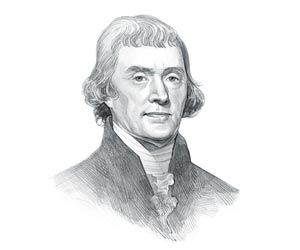|
Steamboats of the 1800s:
Robert Fulton, "Father of Steam Navigation"
Robert Fulton
(1765-1815) built his first steamboat after the death of
John Fitch, and it was Robert Fulton who became known as
the "Father of steam navigation."
Steamboats of the 1800s:
Definition
Definition: Steamboats were water
vessels that were propelled by steam.
Steamboats of the 1800s for kids: Flatboats
The forerunners to the Steamboats of the
1800s were the flatboats.
The flatboats, or 'flats' were
important forms of transportation for the new nation carrying
produce to markets and occasionally transporting passengers.
The cargo transported on
flatboats included corn, furs, flour, fruit, whiskey,
and vegetable and pork. Passengers were taken on
flatboats with tent-like coverings for shelter. They
were slow and uncomfortable. When they reached their
destination the flat boatmen dismantled their 'flat',
sold it for lumber and often the crew would walk home.
Steamboats of the 1800s for kids
The Steamboats of the
1800s started to appear on western rivers in 1807.
The picture of the steamboats
reflect this Important form of transportation in the United States in
the 1800's. The invention of steam power made it much easier to
travel along the rivers. The steamboats had a steam engine which
turned a paddle wheel in back of the boats. Some steamboats had two
paddle wheels on each side of the steamboat which could then reach
even greater speeds. These paddle wheels powered the steamboats both
up and down river. Steamboats could go downstream twice as fast as
the flatboats that they replaced. Steam boats could also go
upstream, which was a Important improvement over the flatboats.
The
Steamboats of the 1800s for kids
The steamboats could travel at the astounding speed of
up to 5 miles per hour. Steamboats quickly
revolutionized river travel and trade, and dominated the
waterways of the expanding areas of the United States in
the south with rivers such as the Mississippi, Alabama,
Apalachicola and Chattahoochee.
The
Steamboats of the 1800s
The steam boats of the 1800s captured the imagination of
the American people. They enabled relatively fast and
comfortable travel across the rivers and waterways of
the US - also refer to Erie
Canal. There were dangers to traveling by the
steamboats. Some sank, there were boiler explosions and
fires. Some steam boats were attacked by Native American
Indians.
Steamboats of the 1800s for kids: The Romance of the Steamboats
People were captivated
by the Steamboats of the 1800s. They were new, and exciting and
there were occasionally steamboat races. However it was the
Showboats that really captured the imagination of the public - but
they were not steamboats. Showboats were pushed by a small tugboat!
A steam engine would needed to have been placed right in the
auditorium, where fabulous shows were performed.
Steamboats of the 1800s for kids: The General Survey Act
The
1824 General
Survey Act was a law passed by the United States Congress in
April 1824 that was extremely important to the maintenance of the
rivers in America. The General Survey Act authorized the president to have
surveys made of important transportation routes. The law
specified that surveys were made by the Corps of Engineers for routes requiring roads and
canals "of national importance, in a commercial or military point of
view, or necessary for the transportation of public mail." The
General Survey Act,
and the mission of the Corps of Engineers, was defined further by
the 1824 Navigation Act that appropriated $75000 to improve
navigation on the Ohio and Mississippi rivers and the 1826 Rivers
and Harbors Act that authorized further surveys and construction
projects.
|

